Choosing an Emergency Scoop Stretcher
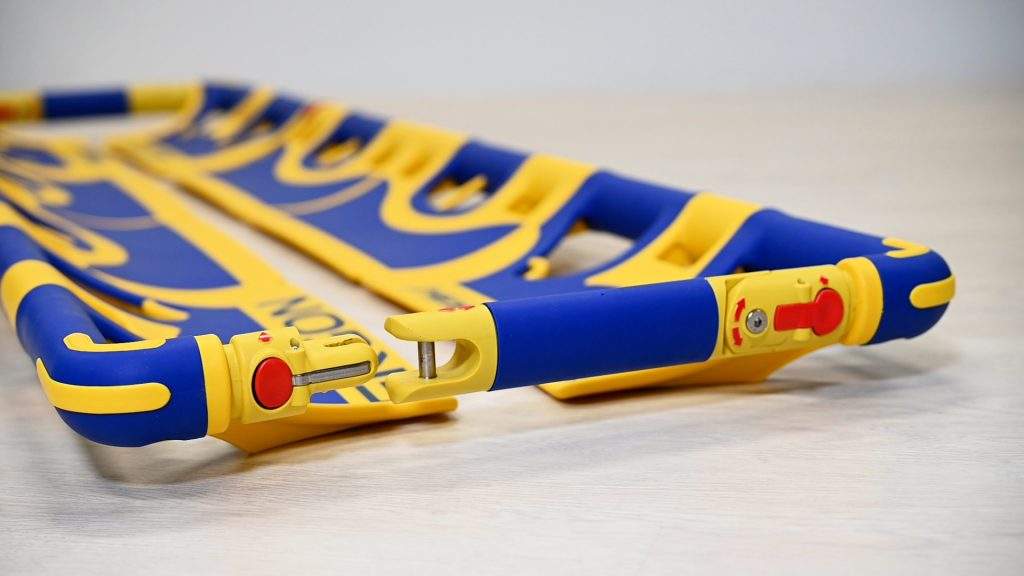
Introduction
In medical emergencies, having appropriate equipment is crucial. An indispensable tool for pre-hospital medical response or emergency ambulance services is the scoop backboard, also referred to as a combi-stretcher. Designed to safely immobilise and transport patients with potential spine or neck injuries, choosing the right scoop stretcher is crucial for patient care and comfort. In this guide, we’ll explore key factors to consider when selecting a scoop stretcher.
Ergonomics and Design
When selecting a scoop stretcher, design plays a crucial role for both the patient and the medical team. Avoid scoop stretchers with thin aluminium edges, as they may snag on the patient’s clothing or become stuck on soft surfaces such as grass. Additionally, steer clear of models with inadequate grips, which can also hinder closure.
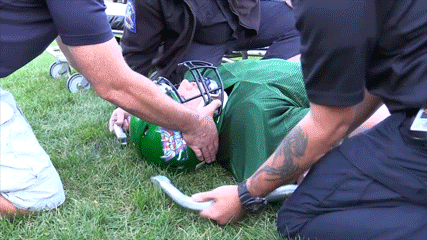
Moreover, it’s important to note that certain scoop stretchers may have significant gaps when closed, potentially failing to provide adequate support for thinner patients’ backs. Choose a scoop stretcher with smooth edges, multiple grip holds, and a design focused on support to minimize these gaps. This helps reduce the risk of additional movement that could lead to further injury during patient loading and transfer.

Image from Me.Ber.
Ease of Use
In high-pressure situations, the last thing medical professionals need is a clumsy scoop stretcher that hinders rather than aids patient care. Choose a scoop stretcher that is intuitive to use, with simple instructions and minimal steps for deployment.
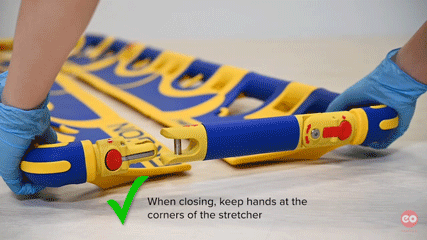
Image from EO Medical
The Right Material Matters
The material of a scoop stretcher is a crucial factor impacting its durability, functionality, and the comfort of patients and paramedics alike. Opting for a budget stretcher made from subpar materials can result in structural issues over time, compromising its ability to effectively immobilise and support patients during emergency situations.
To ensure optimal performance and longevity, invest in scoop stretchers made from specialised soft materials moulded onto high-resistance plastic polymers. Unlike metal stretchers, which can become uncomfortably hot or cold depending on environmental conditions, these rubberised hardy plastic alternatives offer superior comfort and durability.
Meber ERGON: Designed for Comfort and Efficiency
Besides prioritising patient comfort, the ERGON Scoop Stretcher is uniquely designed to assist rescuers and operators with innovative design and patented material, High Comfort Composite Cell (HC3).
Here are some key features that set it apart:
1. Enhanced Grip and Fixation
The handles of the ERGON Scoop Stretcher are lined with HC3 material, a special soft material moulded on a high-resistance plastic polymer. This combination provides both comfort and durability, ensuring a secure grip even in challenging conditions. The handles are also inclined at 20°, allowing for the best possible grip during patient transport. Special eyelets and pins along the handles make it easy to fix snap hooks and straps securely, ensuring stable patient transport.
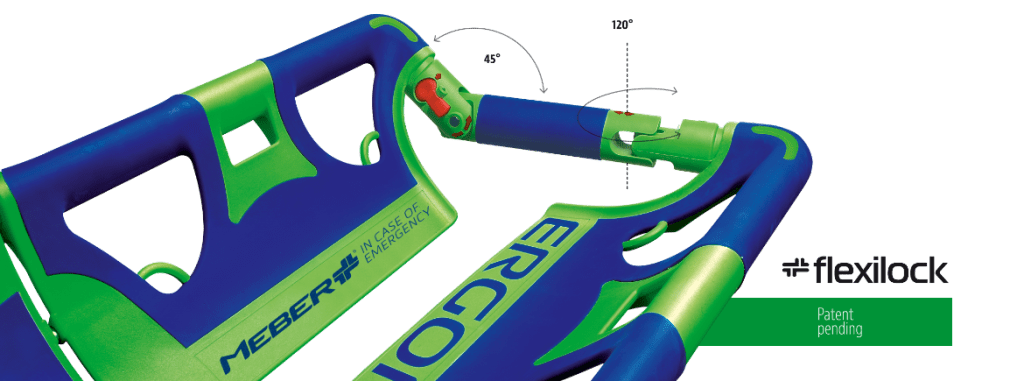
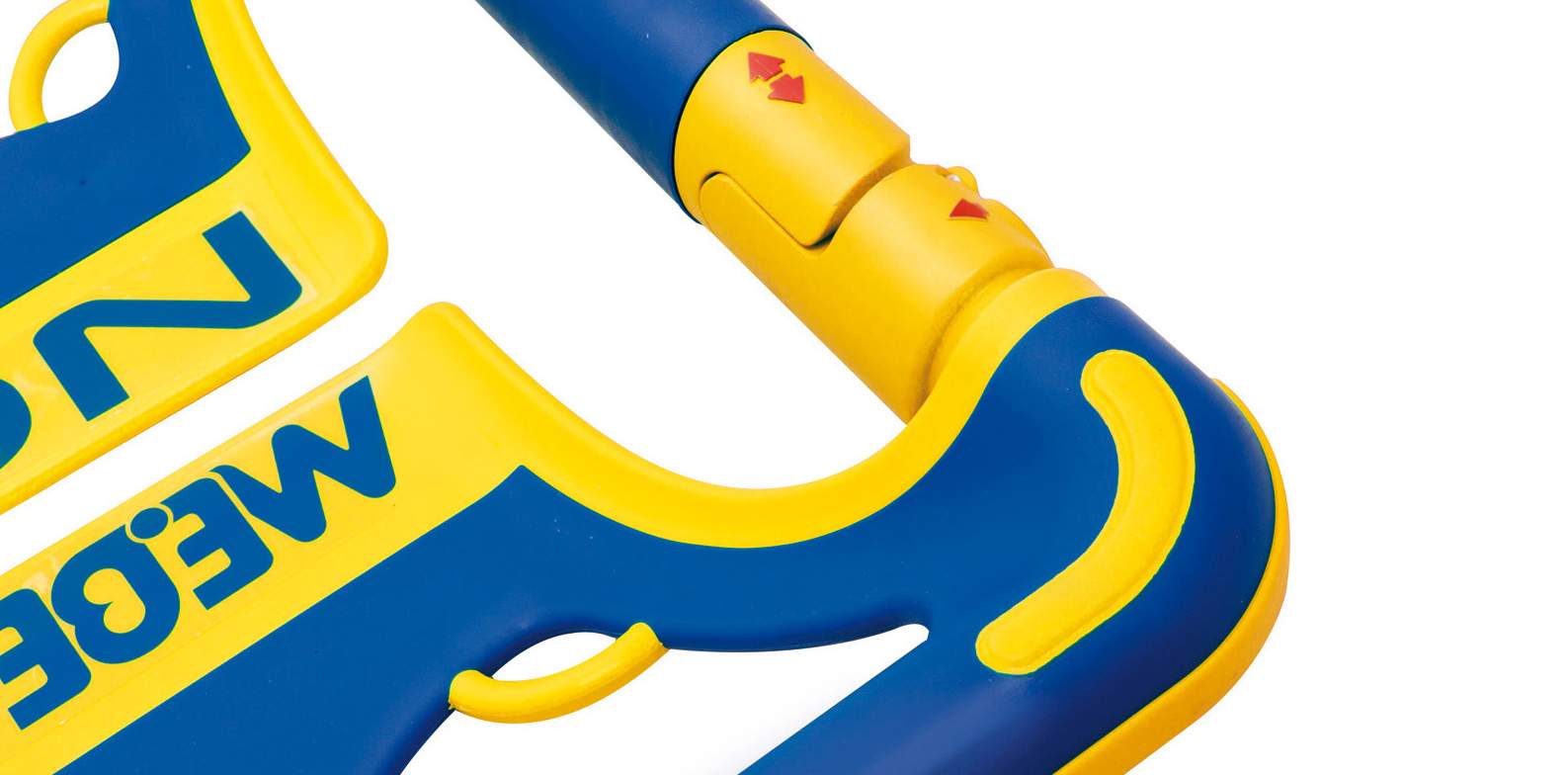
Images from Me.Ber.
2. Optimal Spinal Containment
Compared to traditional scoop stretchers, which typically feature a wider gap of up to 80mm between the two halves, the ERGON stretcher offers a minimal distance of only 25mm.This design, coupled with the HC3 material, ensures a perfect containment of the spinal column, reducing the risk of pinching, sagging or further injury during transport.
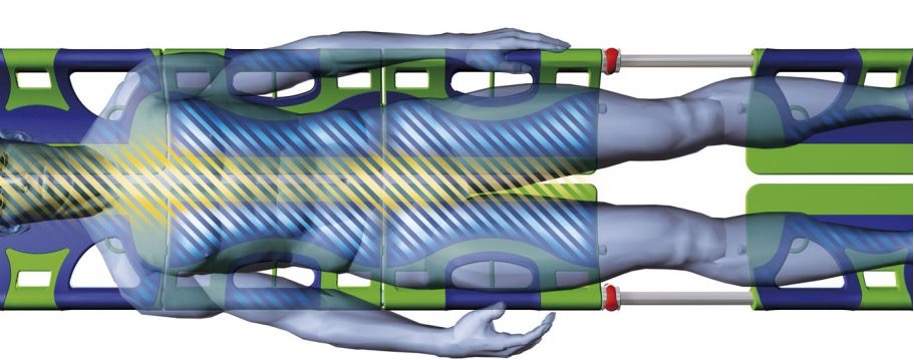
Image from Me.Ber.
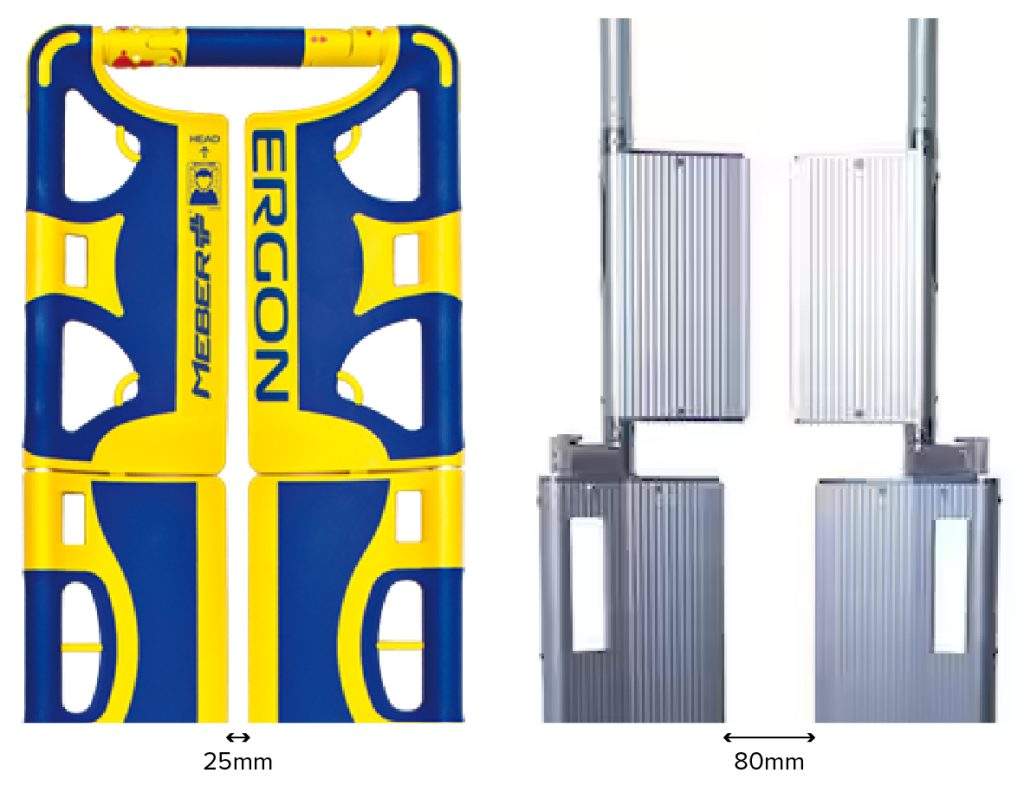
Image adapted from Me.Ber.
3. Enhanced Stability and Thermal Insulation
The use of HC3 material not only contributes to the stretcher’s structural stability but also provides high thermal insulation. Unlike metals, the material is cool to touch even out on a hot road. Similarly, for patients that have been in the water or are in shock, this feature is crucial in preventing hypothermia, particularly during extended stays on the device. The stretcher’s design facilitates gradual and easy placement between the patient and the ground, enhancing overall comfort and safety.
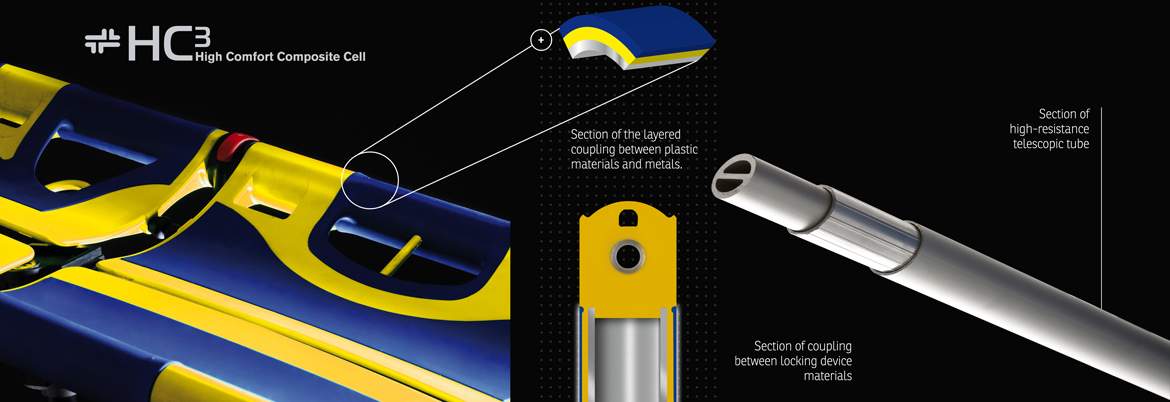
Image from Me.Ber.
4. Certification and Compliance
The ERGON Scoop Stretcher is made in Italy and certified according to European harmonized standards UNI EN 1865 and UNI EN 1789, ensuring its quality, safety, and adherence to industry standards.
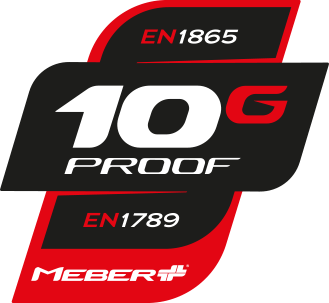
Image from Me.Ber.
Trusted by the national emergency ambulance service in Singapore:


